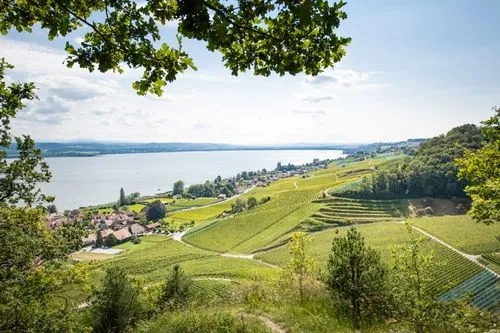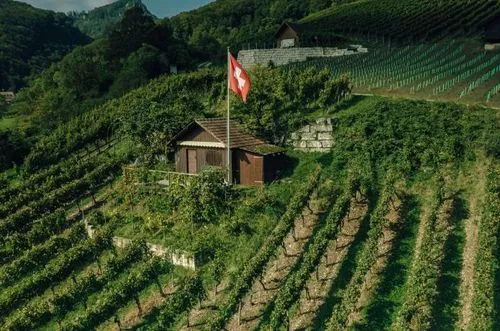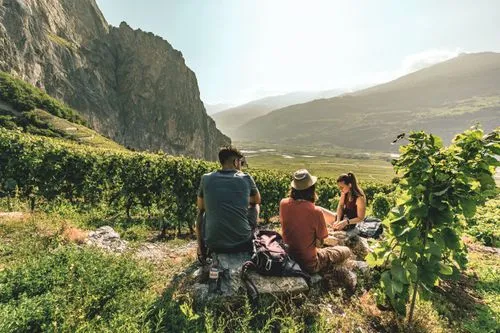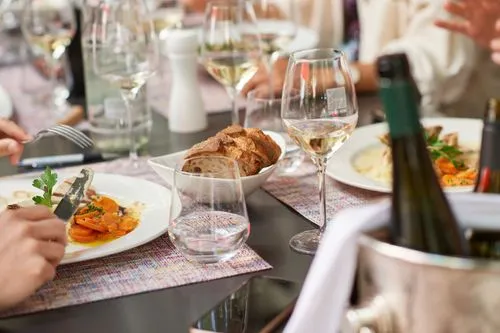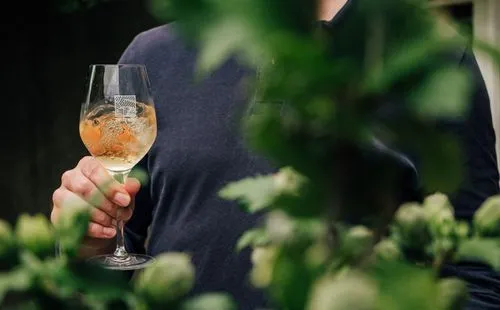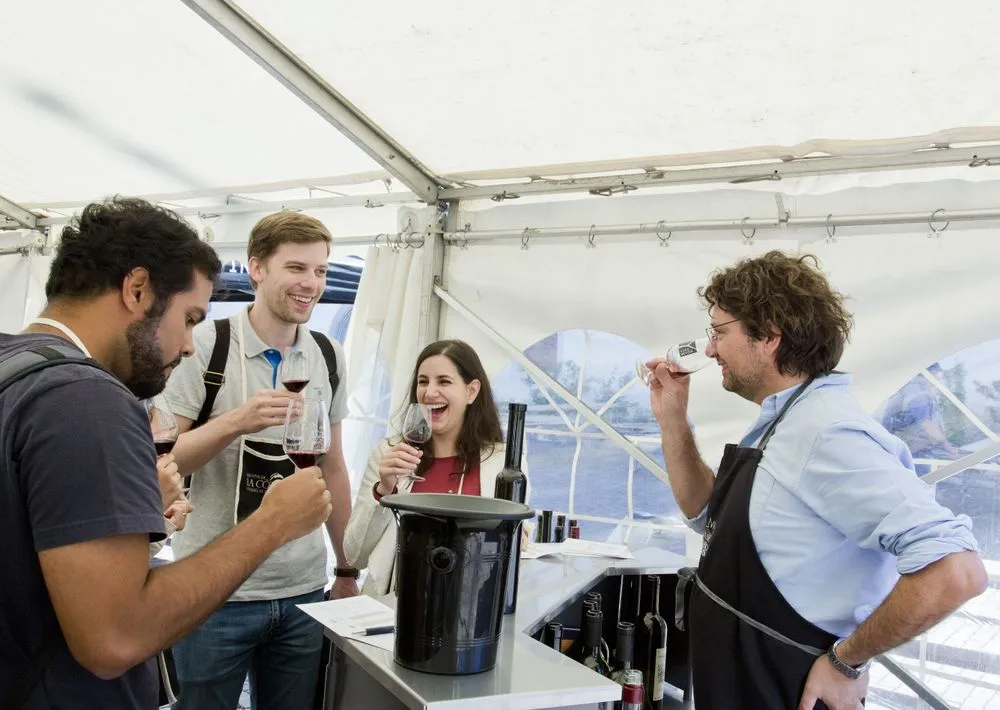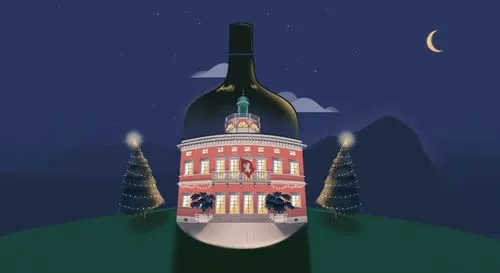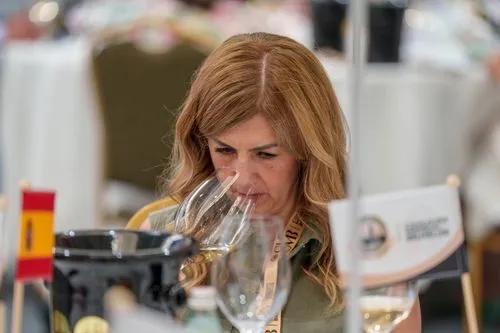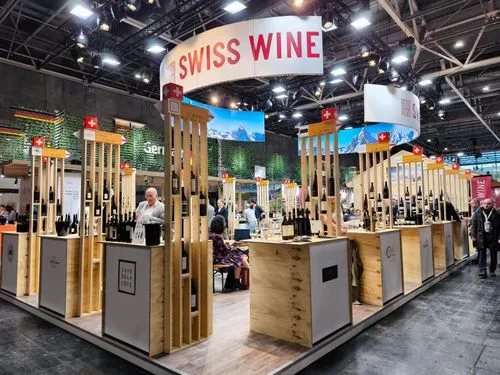Wine tasting
[]
A wine tasting in the middle of a vineyard or in a wine cellar is an exciting experience for connoisseurs and the curious – whether in a small group or at an event where wines from different Swiss wine regions can be tasted all at once. Those who learn directly from the winemaker how the wine in their glass was produced perceive and learn to appreciate the wine differently.
Wine tasting: It's not about flowery descriptions
Was the production year sunny or rainy? Was there hail or drought to contend with? Did the grapes grow on chalky or sandy soil? All these factors influence the wine, its aromas and flavour.
Wine tasting is not about putting your wine knowledge to the test. Nor is it necessary to describe the contents of the glass in the most flowery terms possible. Instead, the focus should be on what preferences and what smell and taste memories the wine evokes in you. Or simply: whether or not you like the wine.
Not everyone tastes the same at a wine tasting
A wine tasting should not be a formal affair; it’s well suited to socialising with friends. Tastes are different, and so it may be that someone discovers flavours that others do not notice.
One thing is clear: practice makes perfect. At the start, it’s difficult to find the right words to describe the many smells.
For the advanced: a themed wine tasting
A wine tasting can be organised around a specific theme – for example, tasting different wines from the same region or from the same grape variety. It’s also exciting to compare different vintages of a wine.
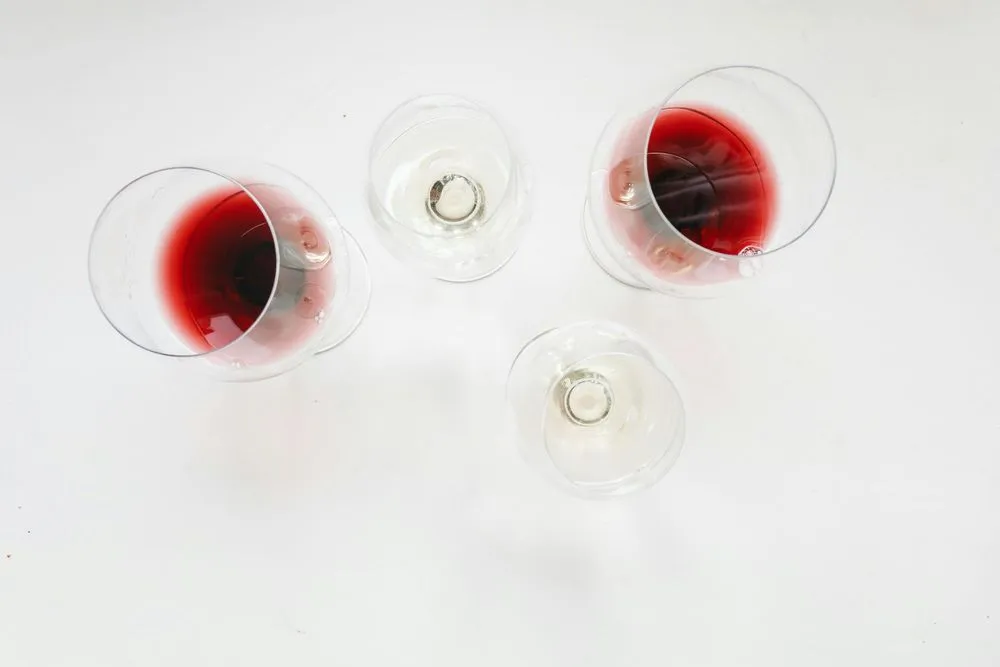
1. The right preparation
Avoid strongly flavoured or aromatic foods such as curry and drinks like coffee before tasting, as these can affect the sense of taste. The same applies to perfumes. Choose a well-lit room without distracting odours. Start with light white wines and work your way up to stronger red wines.
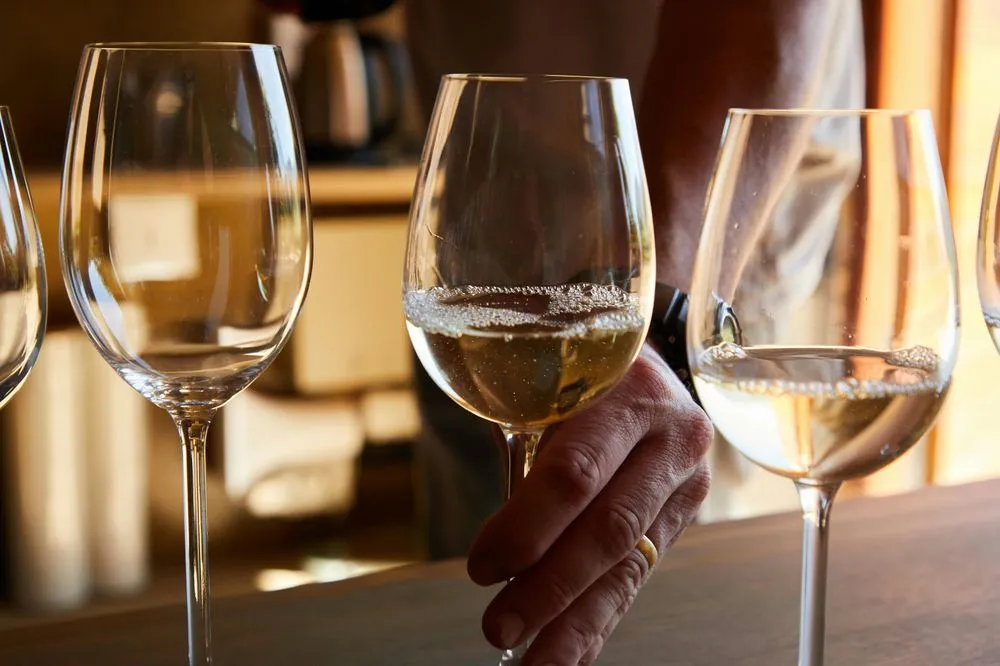
2. The right glass
A high-quality, thin-walled glass with a bowl shape helps to bring out the wine’s aromas in the best possible way.
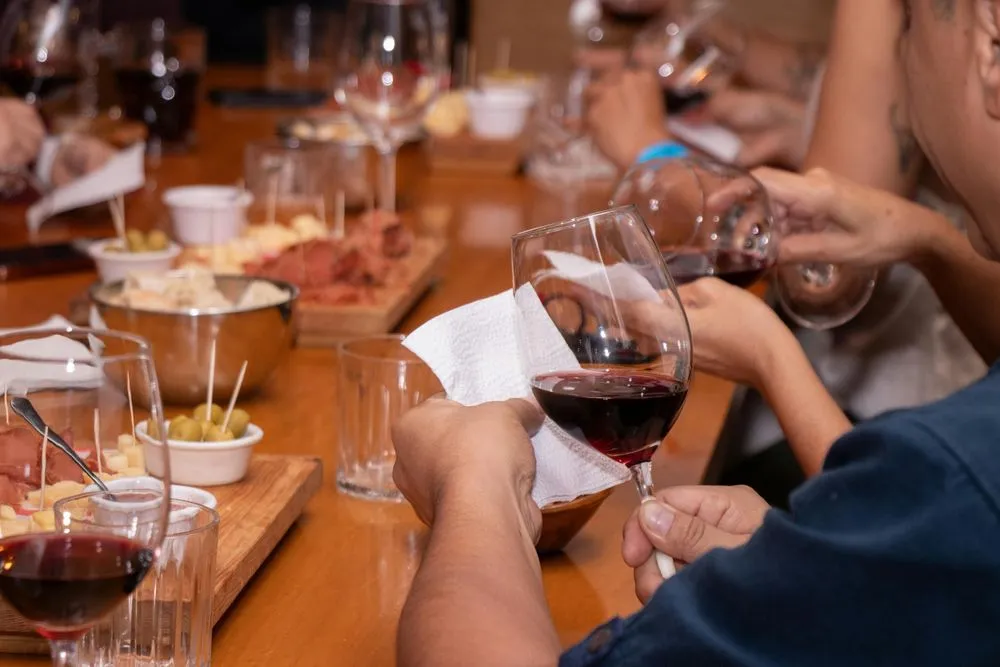
3. Analyse the wine
Robe
Look at the colour and clarity of the wine. If you hold the glass up to a bright light source, you can see the colour nuances better.
White wine: A young white wine such as a Fendant from Valais has a pale colour with greenish reflections, while a more mature wine such as an aged Chardonnay tends to have golden tones.
Red wine: A young red wine such as a Gamay from Geneva has violet reflections, while an older Pinot Noir shows brick-red nuances.
Intensity and clarity: Bright, shiny wines such as a Chasselas from Lavaux are often young and fresh. A cloudy colour can indicate an unfiltered or slightly sparkling wine.
Tears: Swirl the wine carefully in the glass. Thick and slow tears indicate a wine with a high alcohol or sugar content, such as a sweet wine. Thin, fast-moving tears indicate a lighter wine.
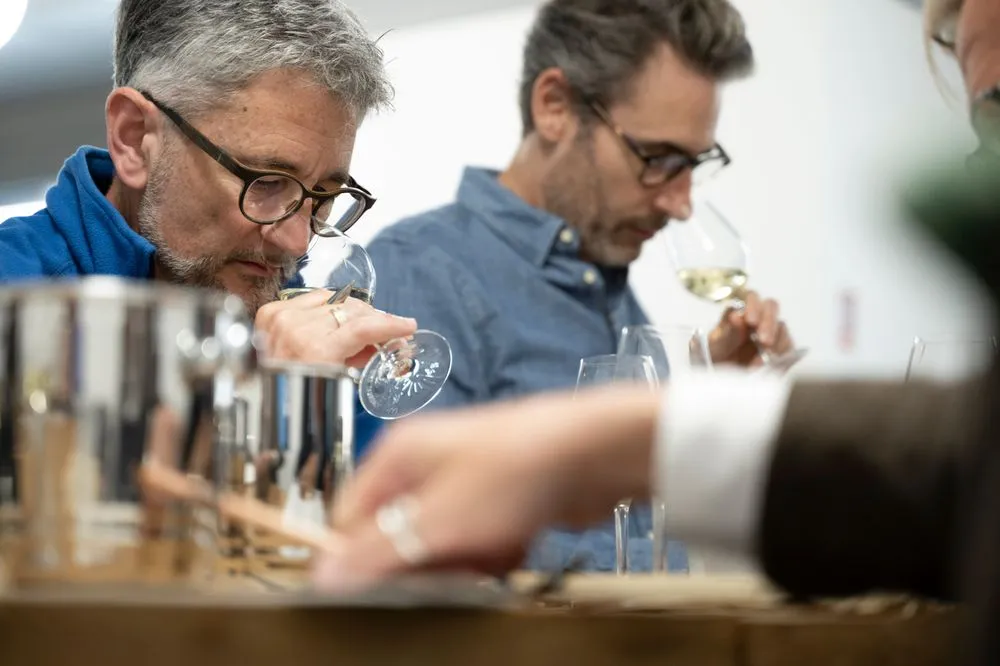
Nose
Hold your nose over the glass to detect the aromas.
First impression: Before you swirl your glass, smell the wine. A Chasselas offers delicate aromas of white flowers, while a Merlot from Ticino may reveal notes of red fruit.
Flavour families: After you have swirled the wine, identify the more complex flavours:
Fruity: apples and pears for a young white wine, cherries for a Pinot Noir.
Floral: linden (lime-tree) or acacia flowers in a Chasselas.
Wood-influenced: vanilla or coconut in a wine that has matured in oak barrels.
Spicy: pepper or cinnamon, typical of a Syrah from Valais.
Condition of the wine: A corked wine has an odour of wet cardboard. If a wine smells bland or oxidised, this may indicate a problem during storage.
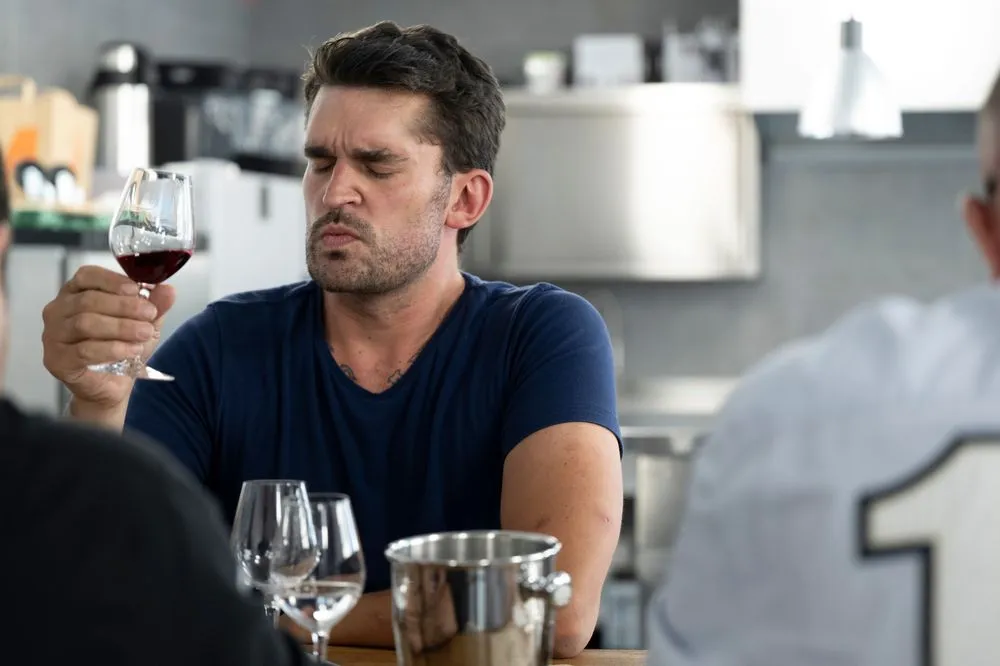
Palate
Take a small sip and let the wine move in your mouth. Pay attention to the flavours, texture and finish.
Attack: This is the first impression. A dry white wine like a Petite Arvine will be lively and acidic, for example.
Balance:
The acidity lends freshness (typical of Swiss white wines).
Tannins give structure to red wines such as Cornalin. Young tannins can have an astringent effect, while the tannins in mature wines are round.
The body reflects the weight of the wine in the mouth: light for a Gamay, stronger for a Syrah.
Length: This refers to the time during which the flavours and aromas of the wine remain perceptible after swallowing or spitting out. The longer the wine lasts, the more it is considered to be complex and of higher quality. This length is often measured in seconds:
A wine with a short length (3 to 5 seconds) will usually be simple and easy to drink, like a thirst quencher.
A medium length (6 to 10 seconds) is typical of balanced and well-made wines, such as a Chasselas from Lavaux.
A long length (over 10 seconds), found in wines capable of aging well, such as a Petite Arvine or a Cornalin, reflects a rich, complex and memorable wine.
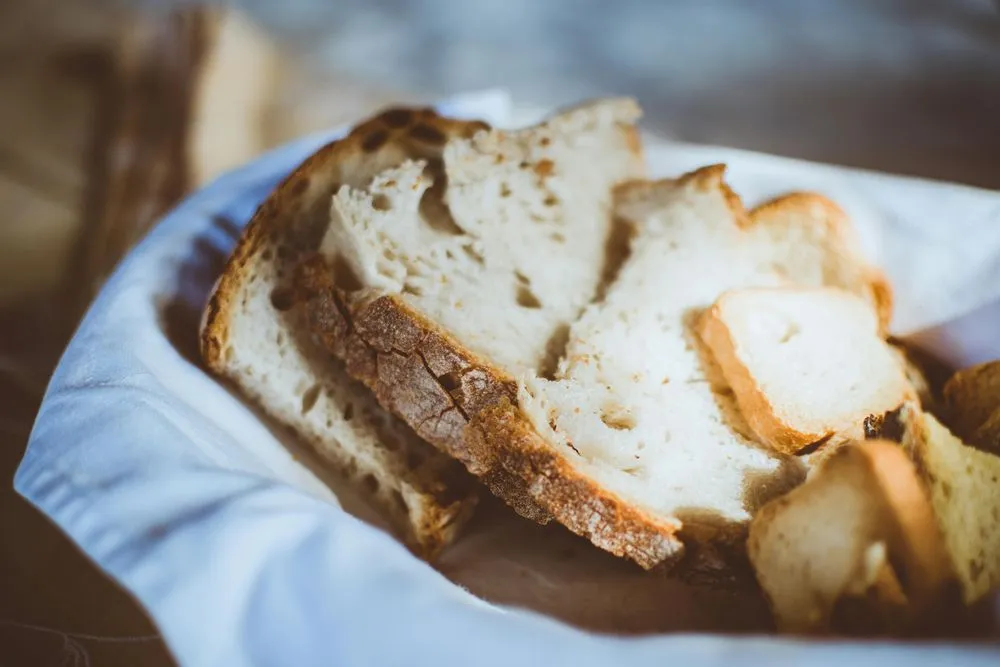
4. Water and bread
Between wines, water helps to neutralise the palate. A neutral bread without strong spices is also ideal to balance the flavour of the previous wine.
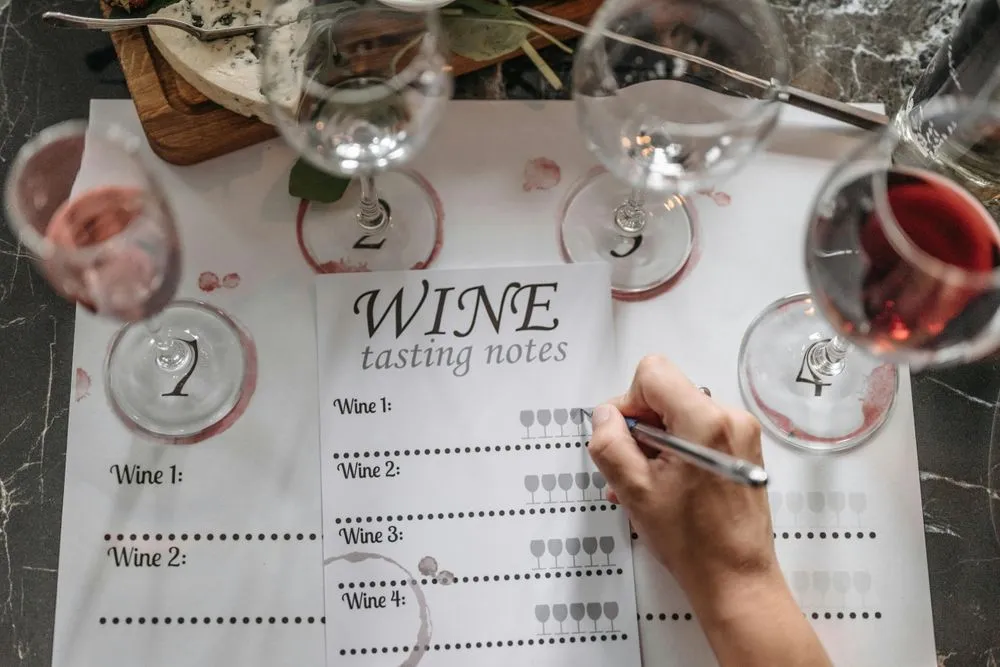
5. Take notes
Record your impressions in writing. Use a simple points system (such as 1 to 5 stars) or describe the flavours and your overall impression in a few words. This will make it easier for you to find your favourites later.
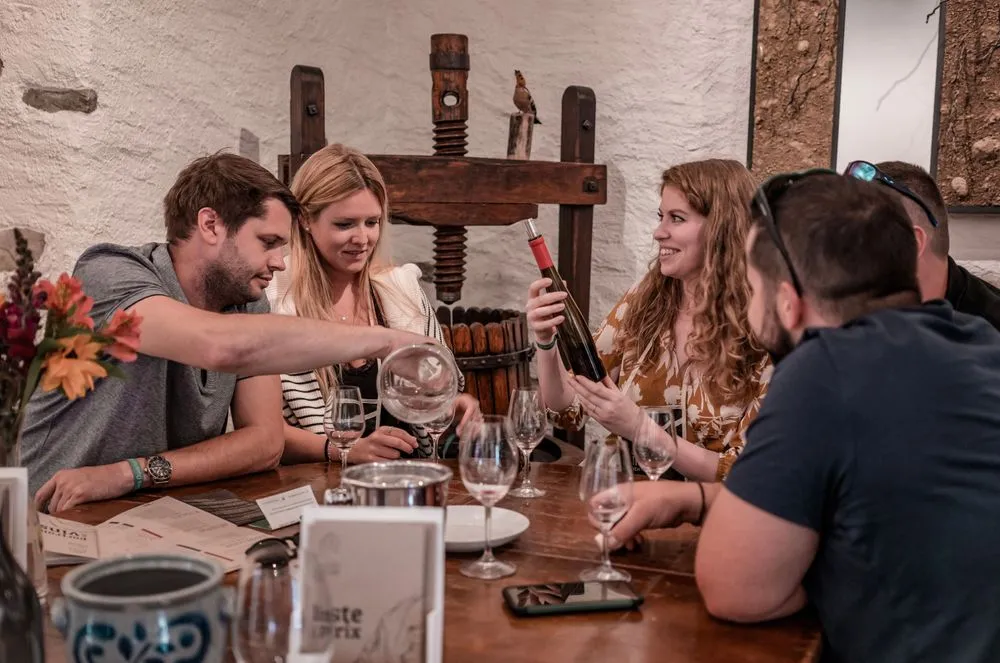
6. Have fun and enjoy
A tasting session is not a test! It's about savouring the wine and discovering new things. Exchange ideas with others and listen to your senses.
Tasting events
Articles about tastings
To visit our site, you must be of legal drinking age in your country of residence.
